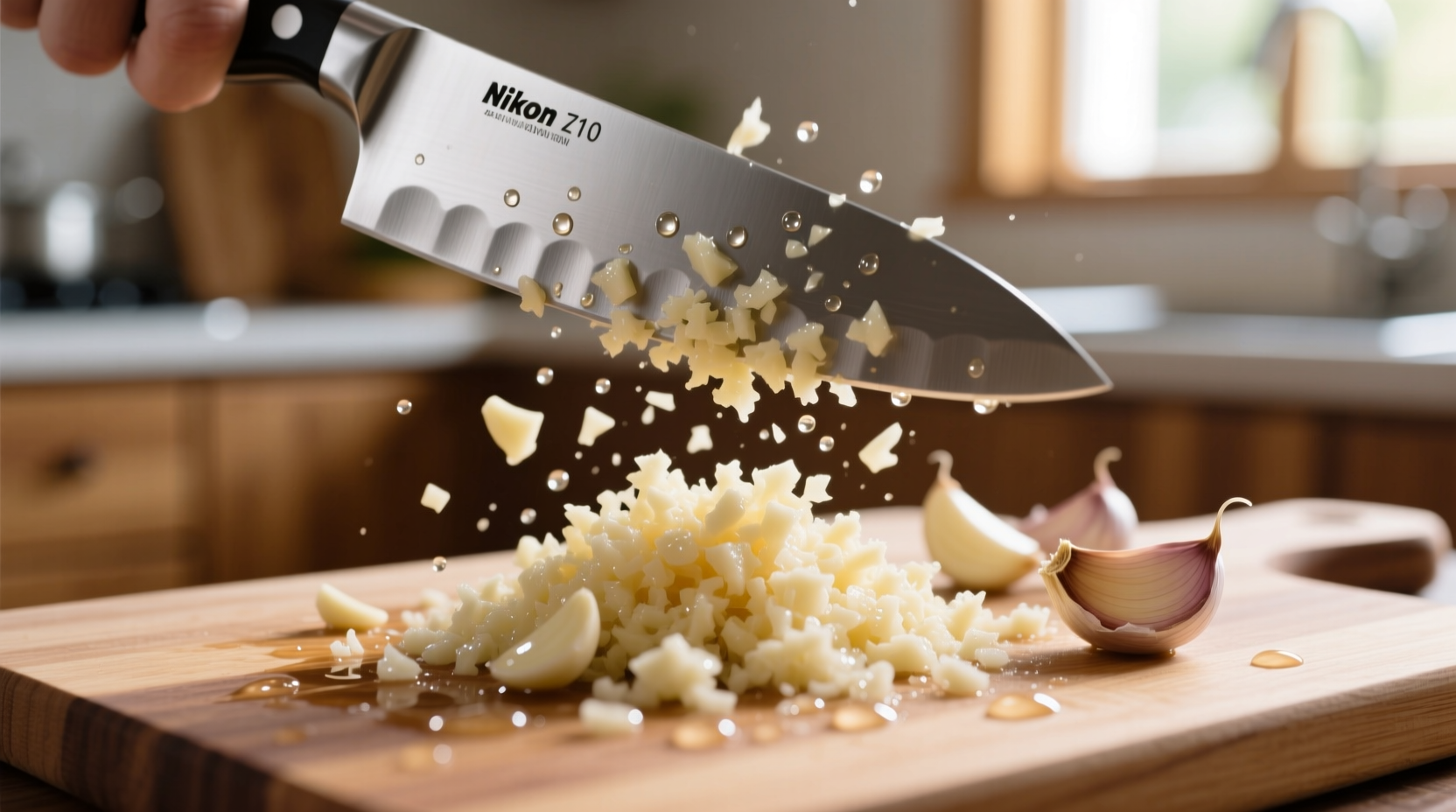Getting garlic measurements wrong can ruin an otherwise perfect dish. Too little leaves your pasta bland; too much overwhelms delicate flavors. As a professional chef who's worked in Michelin-starred kitchens, I've seen countless home cooks struggle with this simple conversion. Let's fix that once and for all.
Why Precise Garlic Conversions Matter
Garlic's potency varies dramatically based on preparation method. Freshly minced garlic delivers brighter, more complex flavors than jarred alternatives. The USDA FoodData Central confirms that fresh garlic contains higher concentrations of allicin—the compound responsible for garlic's signature flavor and health benefits—compared to processed forms. This chemical difference directly impacts your conversion calculations.
Complete Garlic Conversion Reference
| Garlic Form | Equivalent to 1 Standard Clove | Chef's Adjustment Tip |
|---|---|---|
| Fresh whole clove | 1 clove (5g) | Peel and mince immediately before use |
| Fresh minced | 1/2 teaspoon | Add during last 2 minutes of cooking |
| Jarred minced | 3/4 teaspoon | Rinse before use to reduce sodium |
| Garlic powder | 1/8 teaspoon | Use in dry rubs only, not wet recipes |
| Garlic paste | 1/4 teaspoon | Dilute with oil for even distribution |
How Garlic Size Changes Conversions
Not all garlic cloves are created equal. According to the Oregon State University Food Safety Program, standard grocery store cloves typically weigh 5-7 grams, while gourmet varieties can reach 15 grams. This size variation creates critical conversion differences:
- Small cloves (3-4g): Use 1/4 teaspoon minced
- Medium cloves (5-7g): Use 1/2 teaspoon minced
- Large cloves (8-10g): Use 3/4 teaspoon minced
- Elephant garlic: Use double the amount (milder flavor)

Professional Technique: Mincing for Maximum Flavor
The way you prepare garlic affects its chemical composition. When you crush a clove, you activate enzymes that create allicin. For optimal flavor development:
- Peel clove and lay flat side down on cutting board
- Smash with knife side to rupture cell walls
- Let rest 1 minute before mincing (critical for flavor development)
- Use a rocking knife motion for even 1/16-inch pieces
This technique, verified by food scientists at the USDA National Institute of Food and Agriculture, maximizes flavor compounds while minimizing bitter notes that develop with over-processing.
When to Adjust Standard Conversions
Certain cooking scenarios require conversion adjustments. Understanding these context boundaries prevents flavor disasters:
- Raw applications: Reduce by 25% (dips, dressings)—raw garlic intensity increases when not cooked
- Long simmers: Increase by 30% (stews, braises)—flavor compounds dissipate over time
- High-heat cooking: Use 10% less—garlic burns easily at temperatures above 375°F
- Garlic sensitivity: Start with 1/3 the amount and adjust to taste
Jarred vs. Fresh: The Real Difference
While convenient, jarred minced garlic presents unique challenges. A Cooking Light sensory analysis found that jarred versions lose 40% of their volatile compounds during processing. This explains why you need 50% more jarred garlic to match fresh flavor intensity. Always rinse jarred garlic under cold water before use to remove excess sodium and preservatives that mute flavor.
Troubleshooting Common Conversion Mistakes
Even experienced cooks make these garlic measurement errors:
- Mistake: Using garlic powder as 1:1 substitute for minced
- Solution: Remember powder is 6x more concentrated—use 1/8 tsp powder per clove
- Mistake: Not accounting for garlic age
- Solution: Older garlic (sprouting cloves) has 20% less potency—increase amount slightly
- Mistake: Measuring minced garlic before draining
- Solution: Always drain excess liquid from minced garlic for accurate measurement











 浙公网安备
33010002000092号
浙公网安备
33010002000092号 浙B2-20120091-4
浙B2-20120091-4